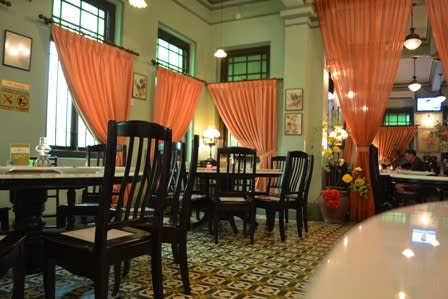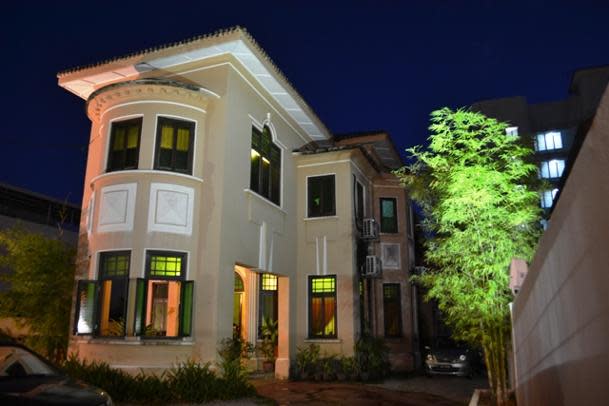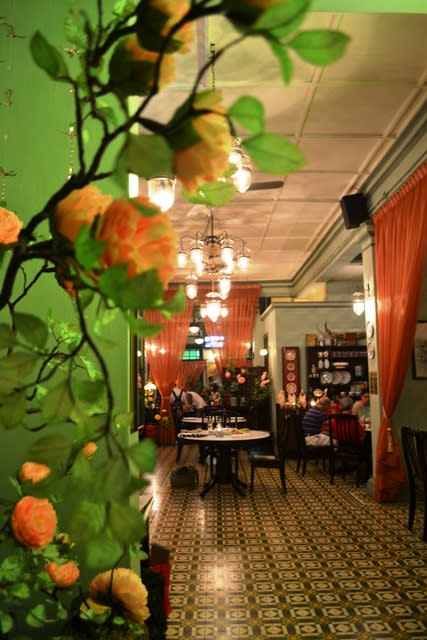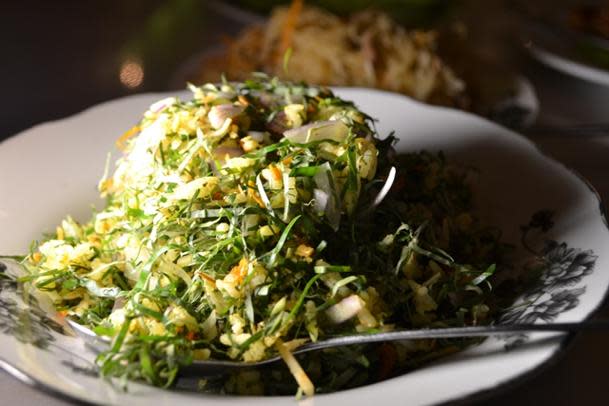Explore one of Penang’s finest Peranakan restaurants

By KF Seetoh, makansutra
When you are done with your usual Assam laksa, Cha Kway Teow, Pasembor, and Hokkien mee fixes in your usual Penang jaunt, the overwhelming calm in you may trigger an epiphany: "Eh, what about Penang-style Nonya food?" Much like in Singapore, Nonya food there is not dished out over a hawker stall counter, but their renditions are very unlike our little red dot's version.
"Penang Nonya food is very influenced by Thai and Hokkien flavours", says Gannick Lee, who, together with the help of his mother, runs one of Penang's finest Peranakan restaurants today.
Nonyas are the womenfolk of the Peranakan people. Their heritage is said to be a thousand years old and began when South Chinese men made their way to South East Asia for trade and work, and married local ladies. What evolved was an intricate intertwining of local and Chinese cultures, by way of social norms, religious practices, customs, dressing and finery, and of course, the most well loved aspect of Peranakan culture -- food.
The kitchen is always the seat and heart of a warm Peranakan home. It feeds the physiological and psychological needs of the family, "which is why we call this Perut Rumah" or the tummy room, Gannick or Nick (his nickname), who snipped his hairstyling career short and started the restaurant over two years ago, tells me.
To begin with, it would be strange to order Singapore- or Malacca-style Ayam or Babi Buah Keluak in a Penang Nonya restaurant. It's as alien as ordering gourmet hot dogs in a hamburger dig, just because it's a fast food joint. You would be happier getting acquainted with their signature Nonya dishes like Jiu Hu Cha (lettuce wrapped stewed turnips with dried cuttlefish), Iche Kabin (Penang Nonya freid chicken), Lor Bak (met rolls), Nasi Ulam (herb rice) or even Kerabu Bok Nee ( sour spicy herb salad with black wood-ear fungus).
The restaurant entrance will first greet you with the splendour of a stand-alone colonial bungalow, which is complete with a little driveway entrance synonymous with boutique hotels in Europe. The whole building is floor-lit at night and has a gentle grandeur about it. Once past the intricate swing door with a glue-chip bevel set and leaded oval glass, you get an immediate sense of serenity, barely 25 metres away from the snarl of traffic outside.
It's lit a little dimmer at night not so to hide the flaws of the interior but to heighten your sense of awareness of the simply warm, pinkish and elegant setting -- drapes, stained glass, marble tables, beaded curtains that divide dining sections and high, chandelier-lit ceilings.
The first dish that piqued my interest was a unique and rare item in Penang menus -- Perut Ikan (RM 16), a pickled fish stomach item done with a spicy sour rempah. The whole dish is redolent with beans, herbs and vegetables, and hidden coyly within are little pieces of wonderfully jelly-like, soft fish belly. I had that irritating cant-get-my-palate-over-it sensation, so I kept eating. It's called addictive, in my dictionary.
But what I enjoyed tremendously, and it's not just because I have difficulty getting it here, was the Nasi Ulam (RM 7) -- rice tossed in finely-grated and chopped herbs and leaves which is graced by a light salted fish fragrance. They take pains to ensure it's well-tossed and fluffy. It's served room temperature and every bite was an exploration of texture, contrasting flavours, bonded by a light, dried fish tone.
Loved it. The Lor Bak (Hokkein style ngoh hiang meat rolls, RM 7), looks normal until you gnaw down on it. It is packed with meat with a lightly crispy skin and seasoned with five spices. I could not stop nibbling on that, too.
Their Jiu Hu Cha (RM 14) was pleasantly dry and bland-looking but was intensely flavoured as punctuated by those dried cuttlefish strips. It had just enough moisture that did not seep through the lettuce leaf wraps, making it a great crunchy little starter. I was partial to the Hey Ya Kay (chincalok or fermented shrimp pork, RM 15). Yes, it's a fairly complicated dish with a fine spicy, salty and savoury rempah, but it kinda lost me with the combination and execution -- like paring fashionable grunge with sarong kebayas.
But, as Nick tells me, "The hardest part of the job is pleasing every self-professed expert that walks in for a meal — there is no perfect yardstick for Nonya cuisine." Priming me for the punchline, he adds, "Once, a lady demanded to know why her achar (spicy pickles) was not served piping hot. I had to explain, apologise, offer it for free, then go back to the kitchen and decide whether to laugh or cry."
Perut Rumah
No 17, Jalan Kelawei
Georgetown , Penang
Malaysia
Tel: +6042279917
Lunch (1130am-3pm)and Dinner(6pm-10pm) daily
Photojournalist K F Seetoh is the founder of Makansutra, a company devoted to touting all the empirical wonders of Asian food culture. He writes a food guide, hosts his own Makansutra TV shows, manages food villages, creates online and mobile content, consults and operates award-winning food safaris. Yeah, in short, he eats, talks, documents and regales about food and sells coffee, sometimes while his mouth is full. CNN dubs him the 'Guru of the Grub' and The New York Times says he's 'the food guide maven'.






